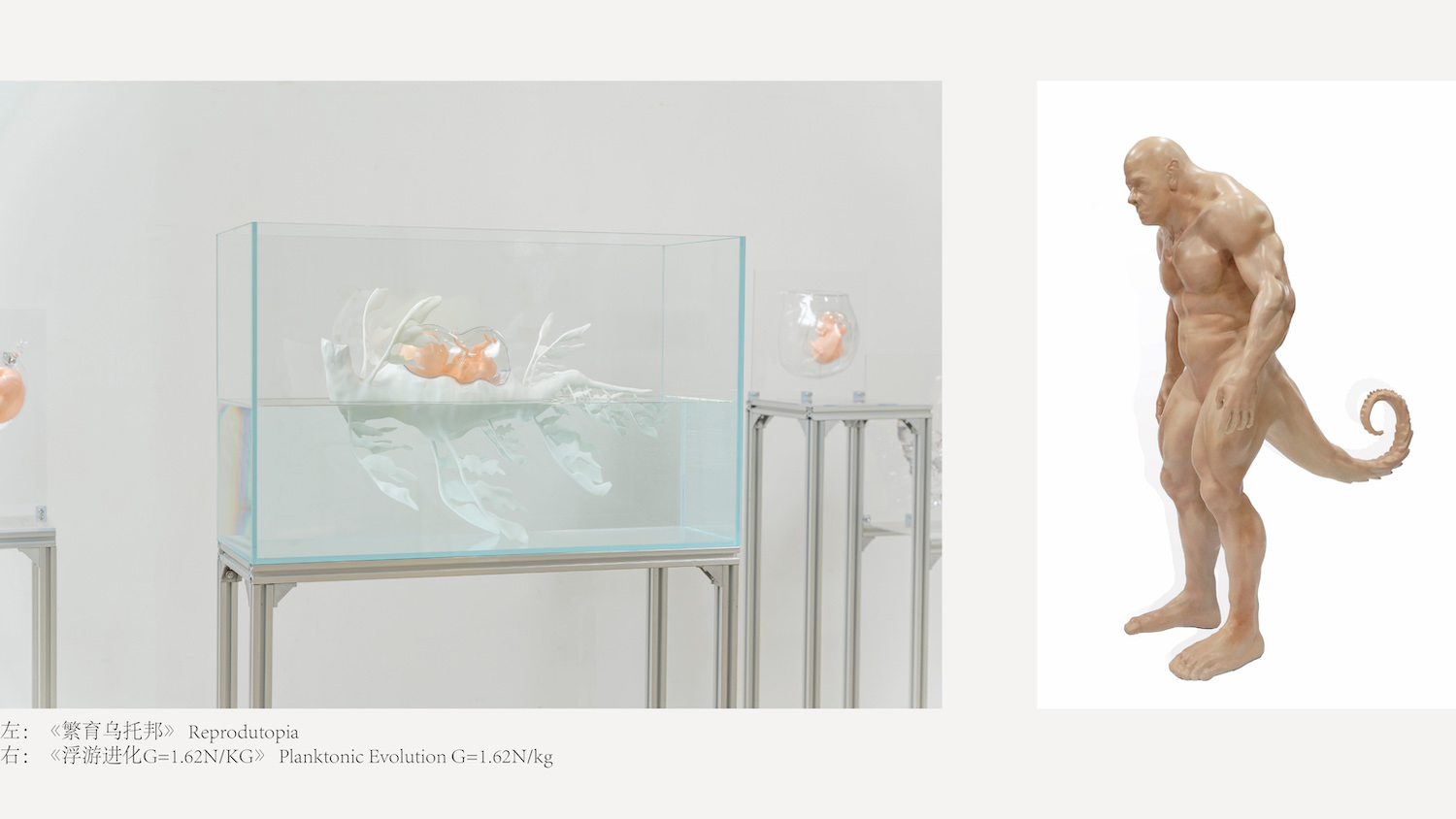不可名状物体档案——我们可以设计未来生命吗?
Archives of Unnameable Objects - Can We Design Future Life?
本次展品作品来自中国美术学院创新设计学院在思辨设计和生物设计课程中的教学实践案例。在生命科学和材料生态学交叉融合背景下,将生物学思维导入设计方法论,关注生物技术哲学与生命伦理思辨,催化新生命现象和有机体现象的艺术价值。通过“微观生长实验室”“生物计算实验室”“设计思想实验室”环节,完成计算型形态生成、生长性材料合成、生物性智造实验和人造生命体的实践。通过设计新材料、发明新物种、构建新生态,形成跨域合作共同探讨生物生态与未来生命的关系,并提出未来设计主张和预见性架构。通过建立不可名状物体档案,我们想象我们的宇宙其实是来自别的宇宙的生物的设计作品,而我们可以设计每一种生命形式。从非人类的视角看待我们自身和人类世界,将生物、微生物、菌丝、矿物、行星残骸、宇宙微粒作为我们的材料,利用思辨的方式尝试想象当我们不再保留人类的形状,或者不由人类物质制成的状态时,我们如何经历形象、物质和概念的转变。不仅是关于不可名状的物体,而且是围绕它们、穿过它们,它们并不真实存在的事实,它们让我们可以超越实用和欢愉;不仅是真实的和想象的,也是发现的和设计的,设计新的视角来解读、呈现和经历这个世界。
This exhibition presents teaching practice cases from the courses on Speculative Design and Biodesign at the School of Innovation Design, China Academy of Art. Against the backdrop of the convergence of life sciences and material ecology, biological thinking is introduced into design methodology, focusing on the philosophy of biotechnology and the speculation on bioethics, catalyzing the artistic value of new life phenomena and organism phenomena. Through the "Micro Growth Laboratory," "Biocomputing Laboratory," and "Design Thinking Laboratory" sections, the practices of computational form generation, synthetic growth materials, biodesign experiments, and artificial life entities are completed. By designing new materials, inventing new species, and constructing new ecosystems, cross-domain collaborations are formed to jointly explore the relationship between bioecology and future life, proposing future design propositions and predictive frameworks. By establishing archives of unnameable objects, we imagine that our universe might actually be a design work created by beings from another universe, and that we have the capacity to design every life form. Viewing ourselves and the human world from a non-human perspective, we use biological, microbial, mycelial, mineral, planetary debris, and cosmic particles as our materials, and employ speculative methods to imagine how we might undergo transformations in image, matter, and concept when we no longer retain human shapes or are made of non-human substances. It is not only about unnameable objects, but also about surrounding and passing through them, and the fact that they do not truly exist; they allow us to transcend utility and pleasure. They are not only real and imaginary, but also discovered and designed, creating new perspectives to interpret, present, and experience the world.
中国美术学院创新设计学院
School of Design & Innovation Of CAA
中国美术学院创新设计学院以“艺术、科技、商业”高度融合的创新设计学科为主体, 在“中华文明源发地”和“数字经济最前线”的良渚办学。同步探索人才、教学、管理、育人的新机制, 以“面向未来、面向社会、面向改革、面向融合”的胸襟气魄, 整合全球设计教育的创新资源, 创新教学、管理机制,打造前沿性、综合型的创新设计学科, 推动以互联网为基础的智能制造和设计集成创新, 着力打造大数据、智媒体时代的“新”包豪斯和呼捷玛斯。
The School of Innovation Design at China Academy of Art focuses on innovative design disciplines that are highly integrated with "Art, Technology, and Business," and operates in Liangzhu, which is both the "cradle of Chinese civilization" and at the "forefront of the digital economy." It concurrently explores new mechanisms for talent cultivation, teaching, management, and education, and with a vision of "facing the future, facing society, facing reform, and facing integration," it integrates innovative resources from global design education, innovates teaching and management mechanisms, and builds cutting-edge and comprehensive innovative design disciplines. The School promotes Internet-based smart manufacturing and integrated design innovation, striving to create a "new" Bauhaus and VKhUTEMAS in the era of big data and intelligent media.
